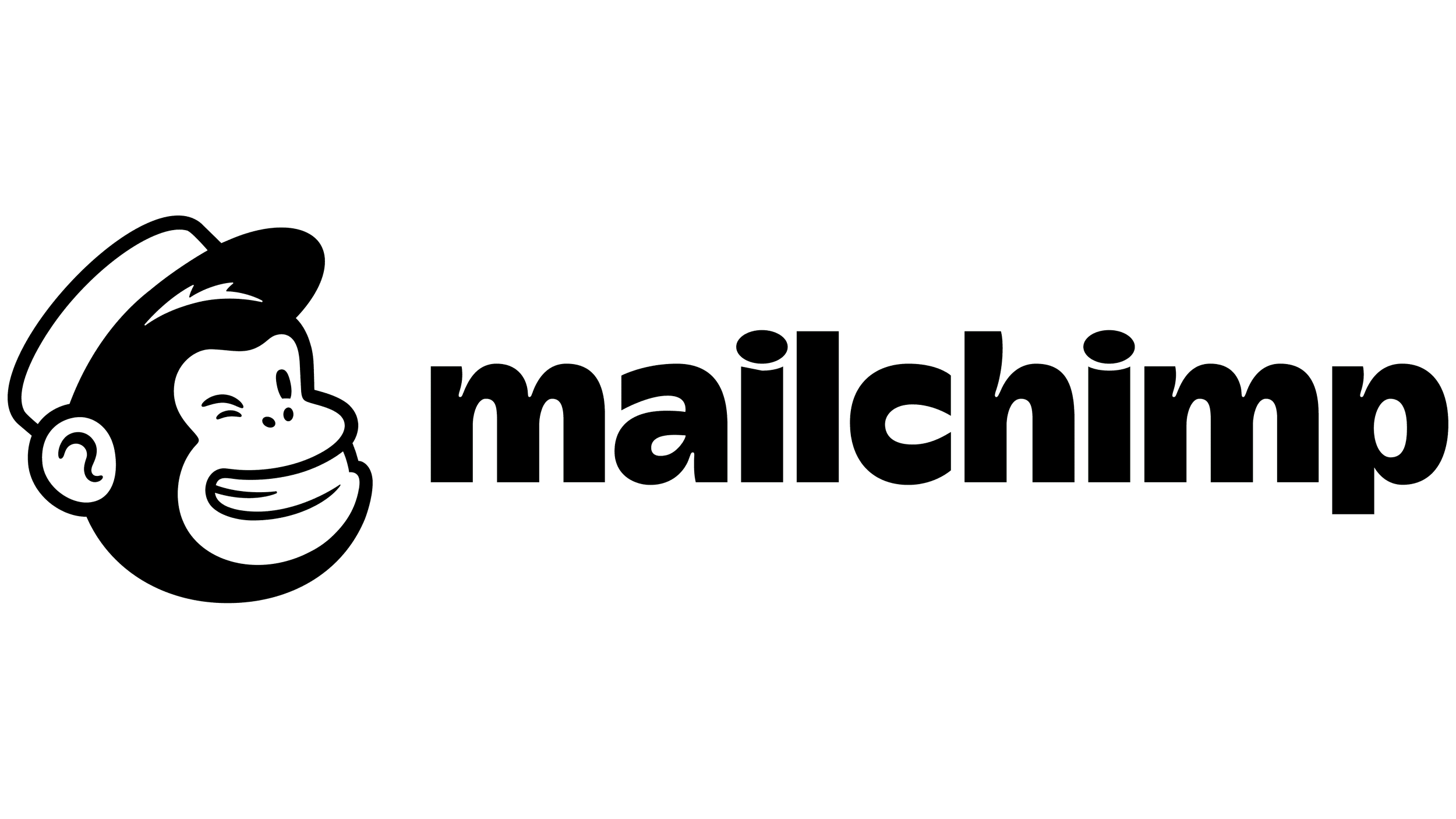My top three email marketing platforms for small businesses
*This post may contain affiliate links, which means I may receive a small commission, at no cost to you, if you make a purchase through a link.*
You want to get started on your digital marketing strategy but the first question is… which email marketing platform is the best for small business?
Since I became my own boss in 2014 I have had two businesses. They were very similar in some respects and worlds apart in others.
I started off with a product based business making jewellery and accessories inspired by nature as well as painting watercolour illustrations.
After I closed that business down I created the business that you see today - soulful marketing strategy services for creative indie businesses.
Over the years I have seen it all. I taught myself how to market my old product based business and dove into years of research and testing. Some of my strategies worked, some didn’t!
So, I understand how it feels when you are just starting out with a specific marketing strategy and you have NO idea where to start. You don’t even know which platform to sign up to, never mind which content strategy you will go for and how many times a week you’ll be posting.
Therefore I thought it might be handy to compile all I know about my TOP THREE email marketing platforms, so that you can hear from someone who has actually worked (and still works) in all three platforms. I’ll let you know my honest opinion on all three and give you the details so that you can make an informed decision for your business.
So let’s get on with it!
Mailchimp.
Mailchimp is the first email platform that I ever used. It’s a basic drag and drop kind of platform with the option to get a bit more techy with custom coding.
Mailchimp was founded in 2001 and has been adding feature after feature ever since. It’s an ever growing platform and because of its experience and age in the industry it’s probably one of the most integrationable (is that even a word?!) email marketing platforms you can find. This means it connects to most apps, websites and shops making it easy to streamline your digital marketing strategy.
Another important point to know is that it offers tiered pricing depending on how many subscribers you have. This makes it a great place to start if you don’t yet have a list because you can try out your email marketing strategy for free in the beginning. However, this does also mean that it can end up being a bit of a pricey outgoing each month when you do start to seriously grow your lists. I think at the moment of writing this the paid plan goes up to around $499.
The templates provided by Mailchimp are clean and professional and the email builder is a simple drag and drop system. I do however find that the design of Mailchimp is a little clunky and I don’t love creating new templates.
Mailchimp offers a huge range of features including, but not limited to:
Email templates
Email building
Audience dashboard
Tags
Segmentation
Domains
Websites
Automations
Social media
Landing pages
Shoppable landing pages
Digital ads
Postcards
Reports & analytics
This makes it a very comprehensive platform when it comes to any kind of business, service, product or otherwise. However, I don’t find these systems very intuitive to set up, it can take a little while to get a hang of the platform if you’re wanting to create more in depth automations.
Flodesk
Flodesk was founded in 2019 and soared to success in the industry of female entrepreneurs. This is because it is simply beautiful! The founders of Flodesk, Martha Bitar and Rebecca Shostak, set out to create an email marketing platform that sent emails your audience LOVE to open.
Because it is a relatively new company, there are nowhere near as many integration possibilities as Mailchimp. However this can mostly be rectified by using an automation platform like Zapier. It can be a little tricky when starting out with this automation process but once you get the hang of it you can link up your favourite platforms with the click of a few buttons.
In terms of pricing, Flodesk has a monthly fee that does not change no matter how many subscribers you have or how many emails you send. That means it can feel a little pricey when you are just starting out but it can save you so much money in the long run if you are serious about building your audience. The Flodesk monthly fee is $38 but if you use my link you can get 50% off your first year - paying $19 per month.
The templates provided by Flodesk are beautiful and there is definitely something for everyone. Even starting from scratch and using their layouts makes it easy to create lovely emails that you feel proud to send out. And although I always say it’s the VALUE that makes your emails successful, it doesn’t hurt when they look good does it?!
I find Flodesk a really intuitive platform to use, from uploading your brand colours to creating workflows (this is where you would create your email welcome sequence) and everything in between.
Here’s a run down of Flodesk’s features:
Email templates
Email builder
Automation
Forms
Analytics
Workflows
Fixed price, unlimited subscribers
Certainly not as many features as Mailchimp but as a new company I’m looking forward to see how Flodesk grows and adapts as time goes on.
Klaviyo
Compared to Mailchimp, Klaviyo is still quite a new platform (although it is still 10 years old having been founded in 2012!). One thing I will say for Klaviyo is that if you run a product based business (and ESPECIALLY if you run your store on Shopify) then this is a really great option.
Klaviyo reminds me of Mailchimp in that the design and templates are really similar. It’s another drag and drop builder with the option for custom coding to make it really personal to you and your brand.
Another similarity to Mailchimp is that it offers tiered pricing, so it is great if you are starting afresh with no audience but when those sign ups start coming in you will have to keep an eye on how much it’s going to cost. They do however state that there is a 90x ROI average with email marketing with Klaviyo (and I know that a few of my clients agree that their Klaviyo account pays for itself.)
A big win for me with Klaviyo is that it integrates so easily with CRM softwares such as Shopify. You can even segment your lists on the behavioural and transactional data that your CRM sends to Klaviyo and go as in depth as you want when targeting your audience. Mailchimp is a comprehensive platform but Klaviyo in my opinion wipes the floor with it when it comes to the segmentation of your audience. And not only is it the king of segmentations, but Klaviyo offers the most comprehensive automation / workflow / journey (whatever you want to call it) I've ever seen!!
You can send customers discount codes on their birthday, see which customers viewed which product but didn’t add it to their cart, send abandoned cart emails and so on - and this is just the basics.
Features from Klaviyo include but are not limited to:
Email building
Flexible pre-built templates
Automations
Behavioural segmentation
Order and shipping tracking
Coupons and discounts
Back in stock alerts
Advanced analytics dashboard
A/B testing
SMS marketing
Next order prediction
Abandoned cart email automation
One thing about Klaviyo is that I wouldn’t say it was beginner friendly. The app / website can feel a little daunting if you don’t have any experience with email marketing and there are so many features it can be easy to stick your head in the sand if you don’t know where to start. But, if you have been working on your segmentation and list building and want to really up-level your product based business marketing, I’d definitely recommend Klaviyo.
PHEW!!!!
So that is a lot of information to take in… and if you have made it this far then thank you for sticking around!!
To finish this off I’ll summarise my opinion…
is a great email marketing tool for both service providers and product based businesses. I don’t love their design functionality but the automations and integrations you can set up in your account are incredibly useful for marketing. The pricing is also a big positive point when your lists are still on the smaller side.
is great if you are a service based business who loves to send beautiful, value rich emails. If you don’t need to integrate multiple marketing or CRM platforms to your email provider then this could be the one for you. It’s easy to use, a fixed price no matter how big your list grows and a joy to work with.
is the one for product based businesses who want to get serious about targeting their audience and segmenting their lists. Its integrations with the likes of Shopify make it a total game changer when it comes to things like behavioural data, abandoned cart reminders, birthday discounts and rewarding loyal customers.
I personally use Flodesk. Although there are some features that I’d love to see come to Flodesk over the next few years (including more in depth analytics) I don’t actually need much more than it already offers. I love to send emails that are visually appealing but packed full of value and I find their platform so easy to use when it comes to setting up workflows, automations and delivering lead magnets.
Hopefully this blog post has helped you with the decision on which email marketing platform is best for you and if you have any questions at all then hit me up in the comments below!
And now that you have the provider squared off, it’s time to get started on your email marketing strategy.
Need some help? Head over to this blog here where I’ve detailed the basics of creating an email marketing strategy or take a look at my services here.





